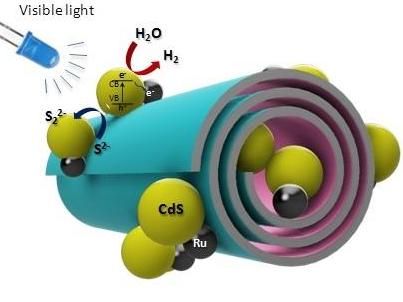Harvesting solar energy with man-made leaves
Scientists in Japan have developed a two-step artificial photosynthetic process that mimic’s nature’s efficient method for harvesting energy from sunlight by using a system of a large number of artificial leaves, as plants do.
The researchers used a large number of light absorbers to relay photons via a small number of antennae into one final energy acceptor, resulting in greater and more efficient energy transfer. Until now, researchers have only used single-step light harvesting systems, which greatly limit the number of absorbers able to feed light into a single reaction centre.
The team combined 440 periodic mesoporous organosilica (PMO) tubes bridged by light-absorbing biphenyl (Bp) groups with five stick-shaped rhenium (I) pentamer units connected to one ruthenium(II) trisdiimine complex (Ru-Re5). This Ru–Re5–Bp–PMO hybrid system concentrates photons absorbed by the large framework of Bp–PMO in two steps: first to the rhenium oligomers, and then to the ruthenium reaction centre.
Tokyo Institute of Technology professor, Osamu Ishitani, who led the research, said: “Photon collection has always been a problem in developing efficient solar energy conversion systems because the molecules are so small and solar light is so dilute. This new system is fantastic because now we can accumulate light from a large area and into, say, a photocatalyst.”
The research team plan to merge this light harvesting technique with their work on photocatalysts for CO2 reduction, with an eventual application in water oxidation photocatalysis.
Original publication
Organizations
Other news from the department science

Get the chemical industry in your inbox
By submitting this form you agree that LUMITOS AG will send you the newsletter(s) selected above by email. Your data will not be passed on to third parties. Your data will be stored and processed in accordance with our data protection regulations. LUMITOS may contact you by email for the purpose of advertising or market and opinion surveys. You can revoke your consent at any time without giving reasons to LUMITOS AG, Ernst-Augustin-Str. 2, 12489 Berlin, Germany or by e-mail at revoke@lumitos.com with effect for the future. In addition, each email contains a link to unsubscribe from the corresponding newsletter.



















































